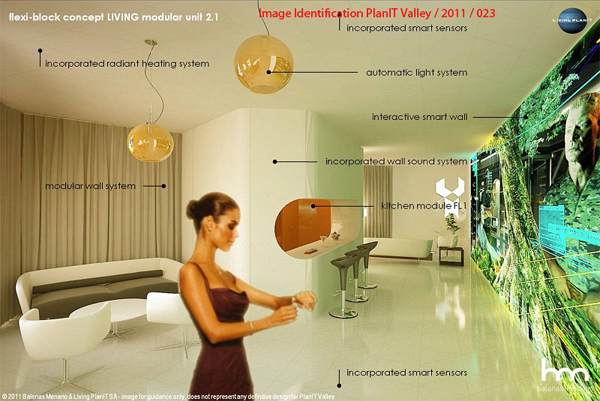Could Augmenting with our Home Make it Smarter?
Former Professor of cybernetics at the University of Reading, Kevin Warwick is quoted in the ES magazine as saying “If we can clear the social hurdles, within a decade many [of us] will be experimenting with implanted chips to do everything from skipping airport security using a passport ID in their hand, to monitoring blood preasure, temperature or sugar, all of which have huge health benefits for emergency services.” He predicted that “by 2040, we might have cranial implants, which you could purchase to communicate by basic thought.” This paints a vivid picture of what this could mean for the connected home of the future.

Imagine this; your body having one or many implanted chips that are read by sensors each time you enter your home or at different intervals when you are at home. From these reading you can learn about your health statistics, things like blood pressure, temperature and even your mental state such as stress. All of this information could then be communicated to different appliances within the home to do different things.
These behaviours could be programmed or learned overtime. From your body reading you could get the optimum room temperature, lighting could change even the king of music if you so wish. This could even extend to our cars, since some of us spend a lot of time in our cars.
This might sound like science fiction but think about it. We already have devices like the EmoSPARK and other learning devices such as thermostats. These devices are trying to learn about us so they can serve us better; wouldn’t they be able to do it better if we communicate directly?
I think augmenting our body with technology in this way will take the concept of the connected home to another level. We already have individuals that are already having Radio Frequency Identification (RFID) chips implanted (BioHacking) in their body to allow them to communicate with their phones, store data such as shopping list. They are also using their implanted chip to unlock their front doors, start their cars and download their phonebook with a wave of their hand. A look around the Dangerous Things website will give you insight into what is possible today.
San Francisco-based NewDealDesign, the designer behind Fitbit, Google’s Ara modular phone, and the Lytro Light Field Camrea, have recently been working on Project UnderSkin, a conceptual device based on a digital tattoo implanted in the user’s hand, which would send near-field communication (NFC) signal to unlock doors and authenticate credit card users, and can track location and movement.
“The future of medical, wearable and consumer technology is one that is already blurring,” said Jaeha Yoo, director of experience design at NewDealDesign. “And down the road it will be quite connected, so implants will be happening, they already are, if you think pacemakers, glucose monitors, etc – and doing many useful things.”
NewDealDesign is the one of the projects we know about but I think there are many more. If we are not comfortable with the implants, we could have the option of wearables and an alternative. Our home could be use to collect health information which you can share with your GP and other bodies maybe your insurance company.